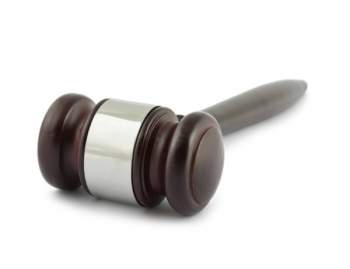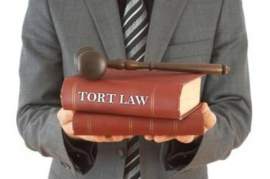
Misrepresentation & Nondisclosure in Tort Law

Misrepresentation and nondisclosure form two fundamental bases for many actions represented under tort law, because any case where false or hidden information plays a significant part essentially implies a standard of care that reflects the negligence addressed by tort. To phrase it more simply, the fact that information has been withheld or misrepresented directly implies a negligent situation.
This means that among the various subsections of tort law, cases of misrepresentation and nondisclosure can prove to be the easiest to form a legal consensus of opinion on whether negligence has happened, because the very idea of the act itself is a negligent action. Misrepresentation and nondisclosure can take many forms, but generally they refer to act or services, usually rendered for compensation that do not fulfill their terms of promise, either because they misrepresent their ability to perform, or fail to disclose elements that prevent adequate performance (like a unknown side effect for a product, or a conflict of interest in a case of service).
There are many remedies one may seek when a case of misrepresentation can be seen to have occurred, though the extent to which they fall under tort law or other forms of legal action are highly dependent on the specific legal system, as well as the nature of the misrepresentation. In nearly all cases, there is an obligation on the provider of a product or service to provide information either by law, or by request, so as to adhere to all legal standards of accurate representation. When a provider fails to disclose all information that could directly influence a tortious (non-contract) agreement for the transaction, then the provider is said to have committed nondisclosure and can be help liable for that action.
The extent by which someone has committed (or not committed) an act of misrepresentation or nondisclosure is determined by their basis of responsibility. The basis of responsibility measures their level and need of disclosure against potential liability in determination of whether actions were legally responsible or not. (http://tort.laws-info.com/Misrepresentation-Nondisclosure/Responsibilities ) Also key to establishing and proving a case of misrepresentation and nondisclosure is the vital, but difficult to quantify, roles played by opinion and intention, which play a direct role in determining negligence and materiality.
Remedies for Misrepresentation:
In tort law, misrepresentation, in most of its forms, represents a core violation to the standard of care, which is used in the determination of culpable negligence. Usually misrepresentation represents a violation of an implied agreement due to one of the parties presenting a product, property, or service in manner or level of quality that is inaccurate to its real conditions or values.
Representation & Nondisclosure:
When a party has been found to be maintaining a policy of nondisclosure, this can lead to charges of misrepresentation, and they can be used as the basis of a tortious action. Usually elements categorized as representing nondisclosure include terms that can directly effect the nature of the agreement, up to and including fraud. Often, cases of representation and nondisclosure enter into situations that specifically entail the transfer of property, products, or services, which are not covered Instances, where the product are service are not to the level of expectation due to a misleading presentation or the withholding of key information, nondisclosure can be said to have occurred...
Basis of Responsibility:
The basis of responsibility in cases of misrepresentation and nondisclosure is based on a comprehensive nexus between disclosure and liability, both of which combine to determine the extent one party has over the services or product they represent in a tort law situation. What the basis of responsibility seeks to ascertain is the level to which an individual can be held accountable in a given a situation, the restitution that must be made if they are found to have committed an act of misrepresentation or nondisclosure, or the level to which their responsibility can be mitigated, up to and including exoneration. Generally, as a rule, the greater one’s level of disclosure, the more diminished one’s level of responsibilities and liabilities are in most transaction of goods or services...
Justifiable Reliance- Materiality:
Justifiable reliance represents the core to any charge of misrepresentation and nondisclosure, as it represents the specific standard to which a representative relationship can be ascertained to the point of legal responsibility. Justifiable reliance, simply put, indicates the extent to which one can be held to have relied on the representations of another. In claims made under tort law, it refers to the extent than one can hold another party liable for their misrepresentations. For justifiable reliance to pertain directly to liability, it must be said to have an acceptable level what is called “materiality”. Materiality constitutes the element of a product that establishes its marketability; usually as the service that a product can provide. Since the offer of service establishes a standard of service, this immediately determines how much one can rely on a product to what its advertised...
Opinion and Intention:
Where the conditions that are used to determine situations of misrepresentation and nondisclosure can become somewhat murky lie in the roles that are played by the somewhat abstract roles opinion and intention play in tort law and product representation. While both seem very basic, their significance in tort law is vital, especially since they can mitigate circumstances where responsibility, liability, materiality, and information need to be quantified and specified as much as possible when making a determination of fault. In both instances, intention and opinion can be very difficult to prove and establish under tort law, as their subjective nature can be difficult to quantify, causing situations where issues of plausible denial can prevent the formation of the unity of opinion that lies at the heart of nearly ever tort action.
Damages:
When suits or legal conflicts over issues of misrepresentation and nondisclosure occur that fall under the auspices of tort law, the forms of compensation and damages to which complainants and plaintiffs are entitled are actually intended to be fairly strict. However, depending on the extent of the damages extended in one of these particular cases, that amount of compensation a plaintiff is entitled can be considerable. Tort cases are centrally designed toward finding a legal basis of responsibility and consensus of opinion upon which determinations of negligence and responsibility are then based. Whether the ultimate determination is made through a legal settlement, jury award, or judge’s decision, it is based on determining negligence or responsibility based on the burden of proof. From there, if the case goes the way of the plaintiff, a determination will be made over the extent of damages to be rewarded based on the plaintiff’s losses...
NEXT: Contributory Negligence



















